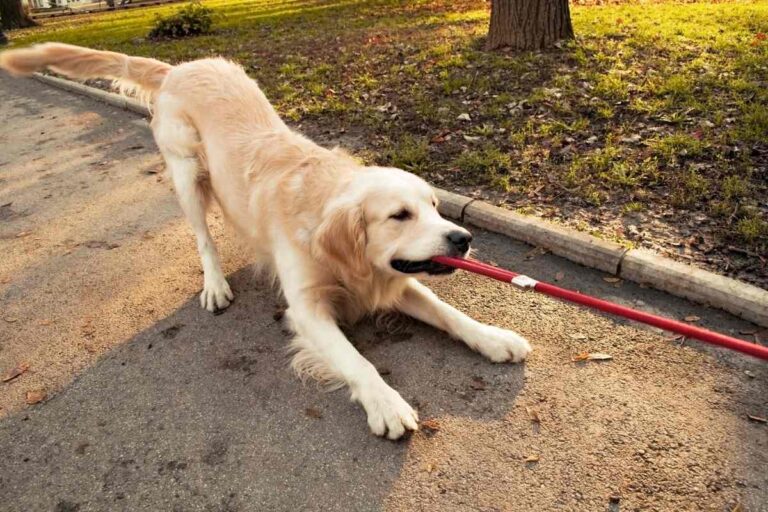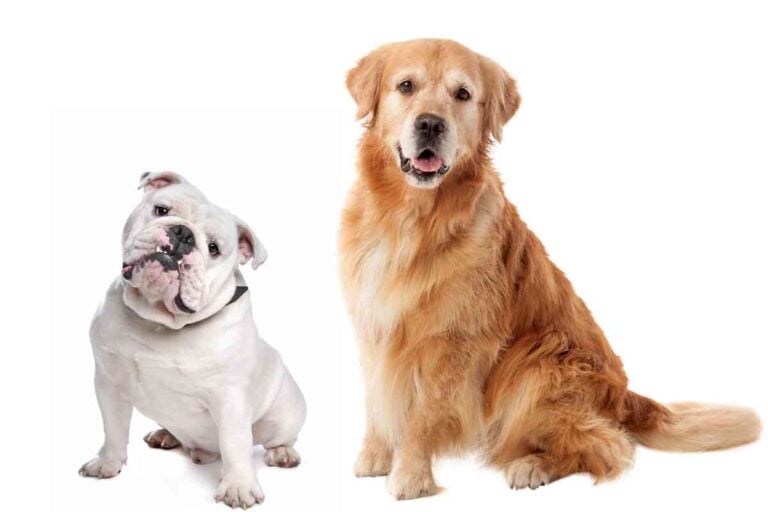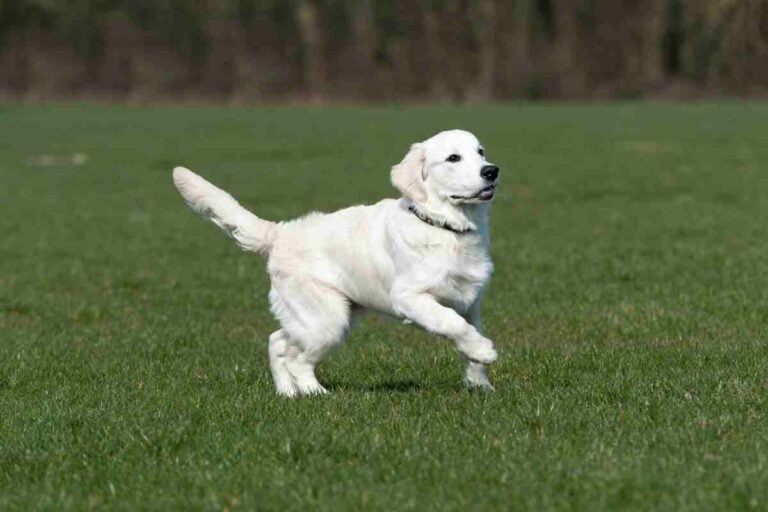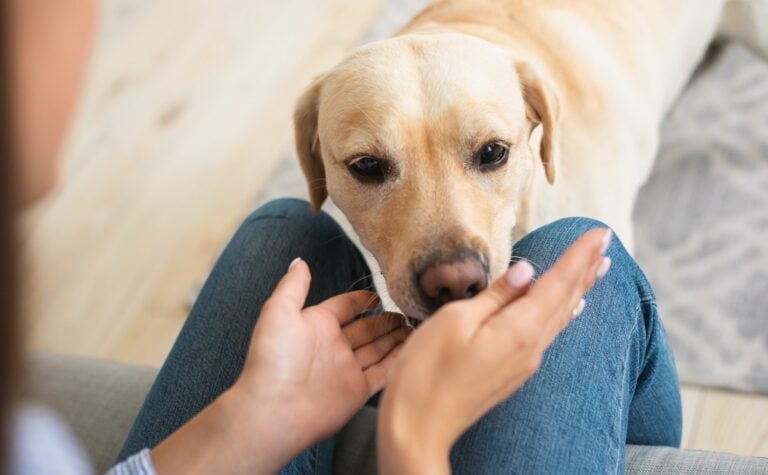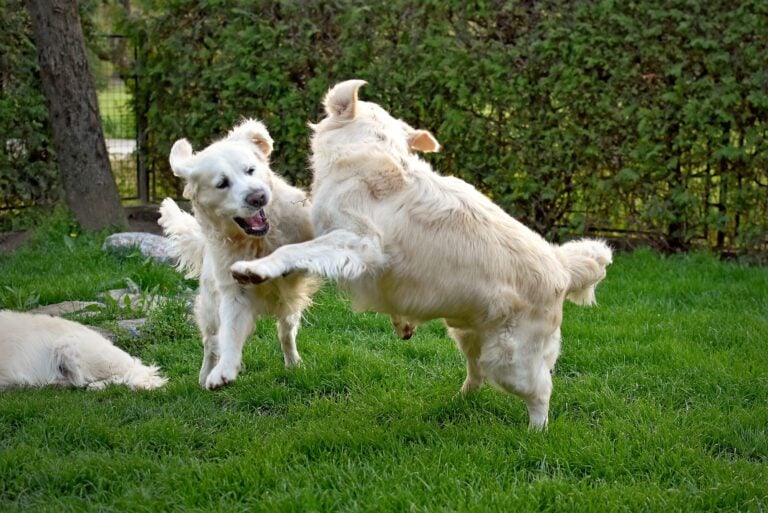Managing Labrador Retrievers’ Shedding: Tips and Tricks
Labrador Retrievers are renowned for their friendly nature and loyalty, but their shedding can pose a significant challenge for owners. If you’re struggling to deal with managing your Lab’s shedding, then you’ve come to the right place.
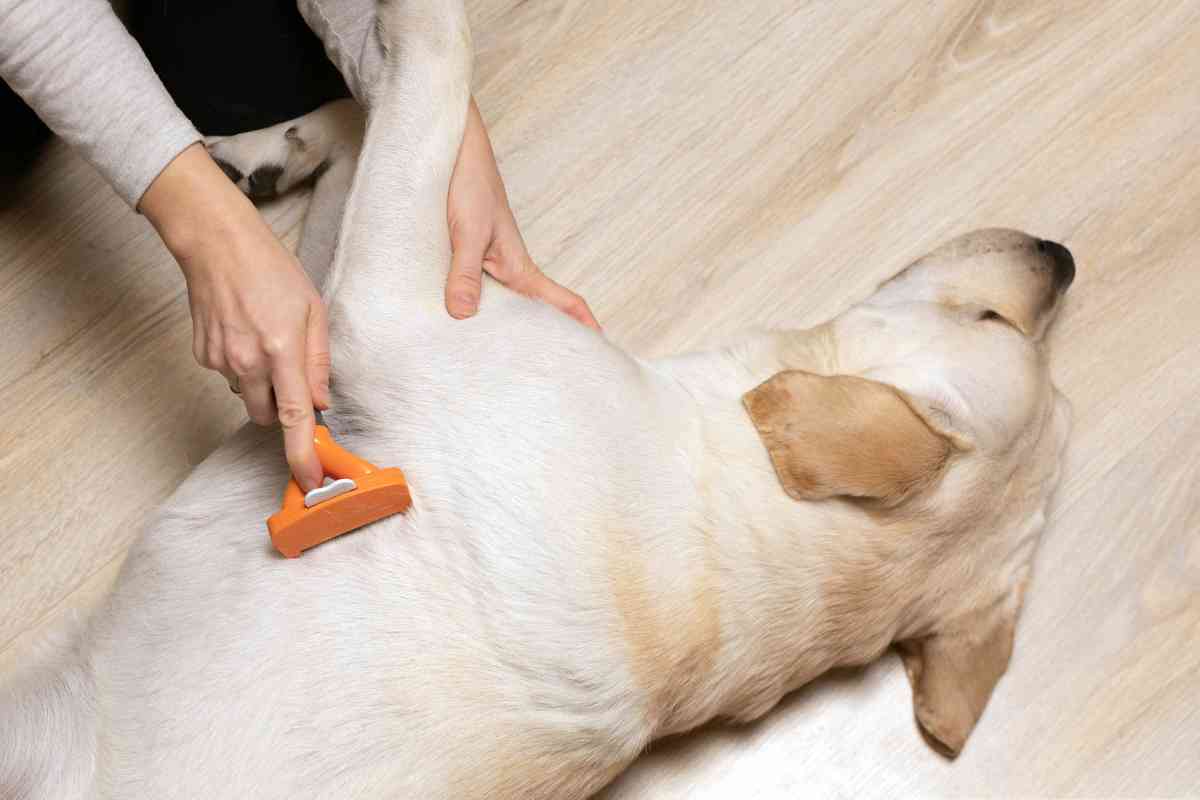
How do I manage a Labrador’s shedding?
To manage a Labrador’s shedding, focus on regular grooming with daily brushing and the use of de-shedding tools. Provide a balanced diet rich in protein and omega-3 fatty acids, ensure proper hydration, and seek veterinary care if necessary. Maintain a clean home by vacuuming, cleaning furniture, and using air purifiers.
This article provides valuable tips and insights on managing your Labrador’s shedding, ensuring a clean and comfortable living environment for both you and your furry companion.
Key Takeaways:
- Labrador Retrievers shed naturally, but shedding can be managed
- Shedding occurs twice a year and can be influenced by temperature, health, and nutrition
- Regular grooming and daily brushing help minimize shedding and prevent matting
- A balanced diet with protein and omega-3 fatty acids promotes coat health
- Veterinary care is important for excessive shedding
- Tips for grooming include regular brushing, careful bathing, and nail trimming
- Shedding cannot be eliminated entirely
Understanding Labrador Shedding
Shedding is a natural process that occurs in all dogs, including Labrador Retrievers. It involves the loss of dead hair from the coat, which is essential for maintaining a healthy coat and skin.
Labrador Retrievers have a double coat, consisting of a thick undercoat and a topcoat, which contributes to their shedding patterns.
Why Labradors Shed
Labradors typically shed twice a year, during the spring and fall, as they adapt to seasonal changes.
Additionally, shedding can be influenced by temperature regulation, natural oils, and overall health. Labrador puppies shed their puppy coats at around 4 or 5 months. Factors like poor nutrition, dehydration, stress, anxiety, skin conditions, and parasites can also contribute to excessive shedding.
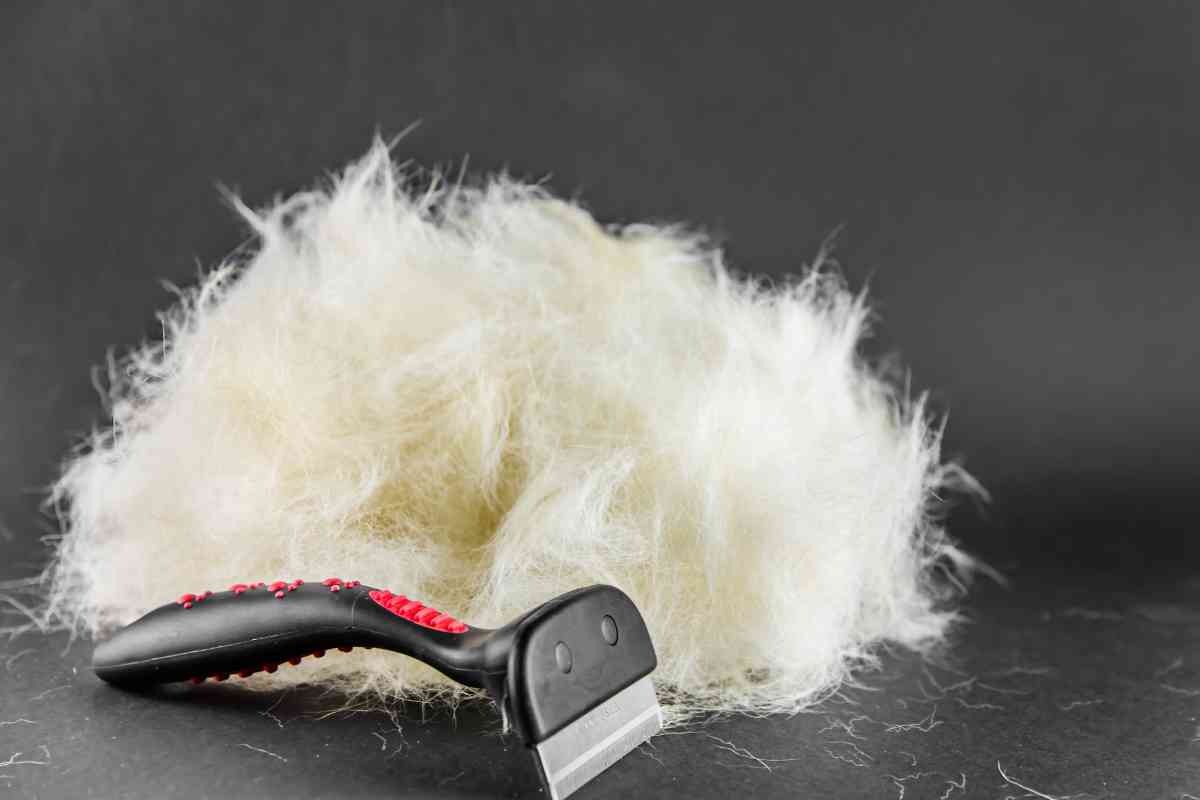
Maintaining Coat and Skin Health
Caring for your Labrador’s coat and skin is crucial in managing shedding. Here are some key practices to consider:
- Regular Grooming:
- Brush your dog’s coat daily with a slicker brush to remove loose hair.
- Use a de-shedding tool and dog rake gently to minimize shedding, avoiding any harm to the skin.
- Trim long fur to reduce shedding and prevent matting.
- Nutrition and Hydration:
- Feed your Labrador a balanced diet rich in protein and omega-3 fatty acids for optimal coat health.
- Ensure your dog stays hydrated, as it directly affects skin and coat condition.
- Veterinary Care:
- If you observe excessive shedding or noticeable changes in your Labrador’s coat, consult a veterinarian.
- Shedding can sometimes indicate underlying health issues or allergies, requiring proper diagnosis and treatment.
Regular grooming, proper nutrition, and veterinary care are essential elements in reducing shedding and keeping your Labrador healthy and content.
Embrace these practices, and enjoy a clean and comfortable home alongside your beloved furry friend.
Tips for Grooming Your Labrador Retriever
Grooming your Labrador Retriever plays a vital role in maintaining a healthy coat and minimizing shedding. By following these tips, you can keep your furry friend looking their best:
- Daily Brushing:
- Brush your Labrador Retriever’s coat daily to promote a healthy coat and minimize shedding.
- Opt for a slicker brush or a Furminator to effectively remove loose hair and prevent matting.
- Regular brushing also helps distribute natural oils, enhancing the shine and overall health of their coat.
- Bathing:
- Regular bathing is crucial for a healthy coat and reduced shedding.
- Use a mild dog shampoo to prevent stripping the natural oils from their coat.
- Aim to bathe your Labrador Retriever every two to three months, or as needed.
- Nail Trimming:
- Keep your Labrador Retriever’s nails properly trimmed to ensure their comfort.
- Utilize a grinder or nail clippers to trim their nails carefully, being cautious not to cut the quick (which may cause bleeding).
- A recommended nail trimming schedule is every four to six weeks.
- Shedding Tools:
- Consider investing in shedding tools like a coat rake or Furminator to minimize shedding and maintain a healthy coat.
- Regularly use these tools to eliminate loose hair and prevent matting.
Make sure to establish a consistent grooming routine that includes daily brushing, regular baths with mild shampoo, nail trimming every four to six weeks, and the use of shedding tools.
By adhering to these practices, you can ensure your Labrador Retriever sports a healthy, shiny coat while minimizing shedding.
Managing Excessive Shedding in Your Labrador Retriever
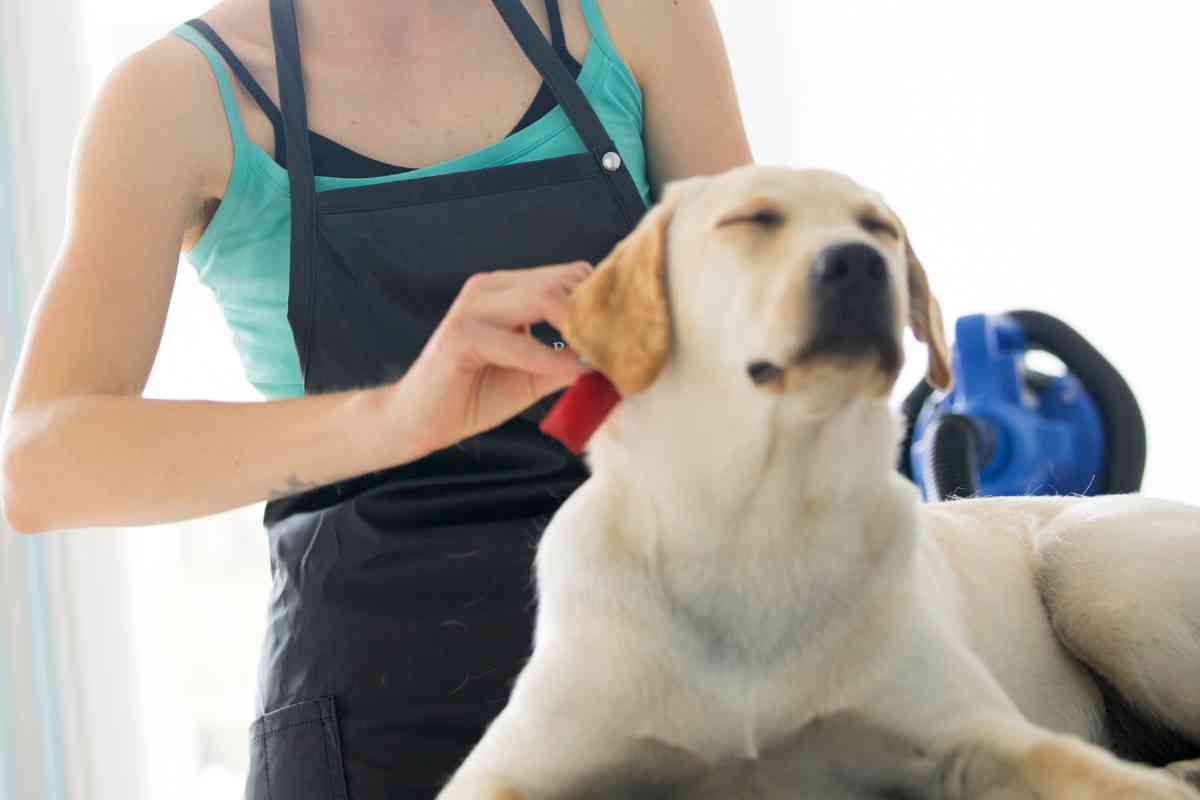
Labrador Retrievers are known for their shedding, but excessive shedding can sometimes indicate an underlying health issue.
Here are some effective ways to minimize shedding and manage excessive shedding in your Labrador Retriever:
- Minimizing Shedding:
- Regular grooming and brushing are crucial in removing loose hair and maintaining a healthy coat.
- Ensure your Lab receives a high-quality diet that provides essential nutrients for a healthy coat.
- Regular exercise promotes overall health, which can contribute to a healthier coat and reduced shedding.
- Shedding Solutions:
- Brush your dog regularly: Use a Labrador shedding brush and gently rake over their coat in one direction to remove loose hair. This practice helps keep their coat clean and smooth.
- Bathe your dog: Bathing can aid in removing loose hair, but be cautious not to overdo it, as excessive bathing can dry out the skin and lead to more shedding.
- Utilize a de-shedding tool: Consider using a specialized de-shedding tool designed to remove the undercoat without damaging the topcoat.
- When to Seek Veterinary Care:
- If you have tried the above solutions and your Labrador Retriever continues to shed excessively, it is advisable to seek veterinary care.
- Excessive shedding can be a symptom of an underlying health condition or a side effect of medication.
- Your veterinarian can perform a thorough examination to identify any potential health issues and provide appropriate treatment or medication if necessary.
Effectively managing excessive shedding in your Labrador Retriever involves regular grooming, a balanced diet, and adequate exercise.
If your dog experiences persistent excessive shedding, try the aforementioned solutions and consult with a veterinarian for further evaluation and guidance.
Maintaining a Clean Home During Shedding Season with Your Labrador Retriever
Shedding season can pose a challenge for Labrador Retriever owners when it comes to keeping their homes clean. Here are some helpful tips to maintain a clean and comfortable living environment during shedding season:
- Vacuuming:
- Regularly vacuum all surfaces, including carpets, rugs, and furniture, using a high-quality vacuum specifically designed for pet hair, such as the Dyson or Shark models.
- Consider increasing the frequency of vacuuming if your Labrador Retriever has access to all areas of the house.
- Cleaning Furniture:
- Use a lint roller or a vacuum with an upholstery attachment to remove pet hair from furniture.
- If your furniture has removable covers, wash them regularly to keep them fresh and hair-free.
- Protecting Carpets and Hardwood Floors:
- Place area rugs or runners strategically to protect your carpets and hardwood floors from excessive pet hair accumulation.
- Consider using a protective mat beneath your pet’s food and water bowls to prevent spills and stains.
- Regular Brushing:
- Brush your Labrador Retriever regularly to remove loose hair and prevent it from spreading throughout your home.
- This not only helps reduce shedding but also promotes a healthier coat.
- De-shedding Products:
- Use de-shedding shampoos and conditioners during bath time to help minimize shedding.
- These specialized products can assist in reducing loose hair and keeping your Labrador’s coat healthier.
- Clean Bedding:
- Regularly wash your pet’s bedding to keep it clean and free from accumulated hair.
- Consider using a pet-friendly detergent and follow the care instructions on the bedding.
- Air Purification:
- Utilize air purifiers to help remove pet dander and hair from the air, improving the overall air quality in your home.
Remember, shedding is a natural process for Labrador Retrievers, and some level of hair around the house is to be expected.
With these tips and a little extra effort, you can maintain a clean and comfortable home during shedding season while keeping your beloved Labrador Retriever happy and healthy.
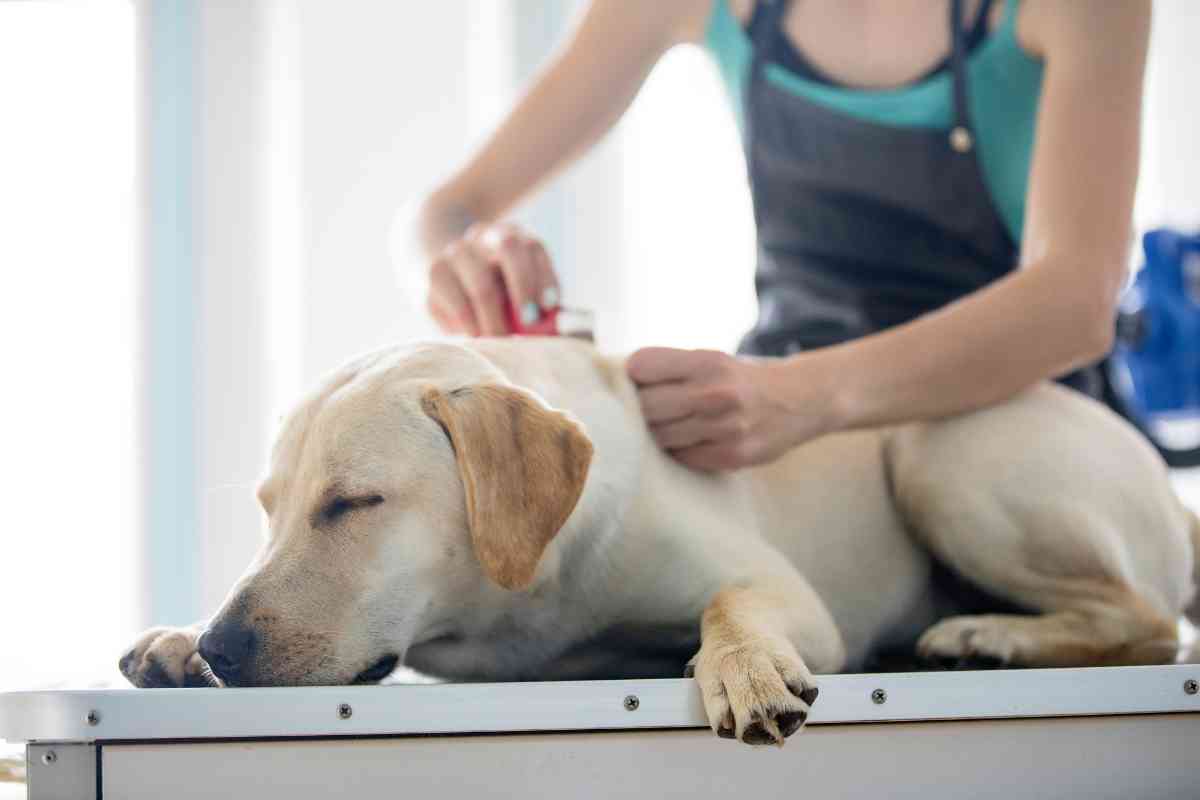
Conclusion
Dealing with Labrador Retrievers’ shedding can be a challenge, but it is not impossible. Regular grooming, a healthy diet, and proper hydration can go a long way in reducing shedding and maintaining a healthy coat and skin.
It is important to note that shedding is a natural process for Labrador Retrievers and should not be completely eliminated. However, excessive shedding can be a sign of underlying health issues, so it is important to monitor your dog’s shedding patterns and consult with a veterinarian if necessary.
Regular brushing and combing can help remove dead hair and prevent matting, which can lead to skin irritation and infection. Using a de-shedding tool designed for double-coated breeds like Labradors can also be helpful in reducing shedding.
Proper nutrition is also important for maintaining a healthy coat and skin. A diet rich in omega-3 fatty acids can help reduce inflammation and promote healthy skin and coat. Fresh water should always be available to prevent dehydration, which can lead to skin dryness and increased shedding.
In conclusion, dealing with Labrador Retrievers’ shedding requires a combination of proper grooming, nutrition, and hydration. While shedding cannot be completely eliminated, these measures can help reduce shedding and promote a healthy coat and skin.

